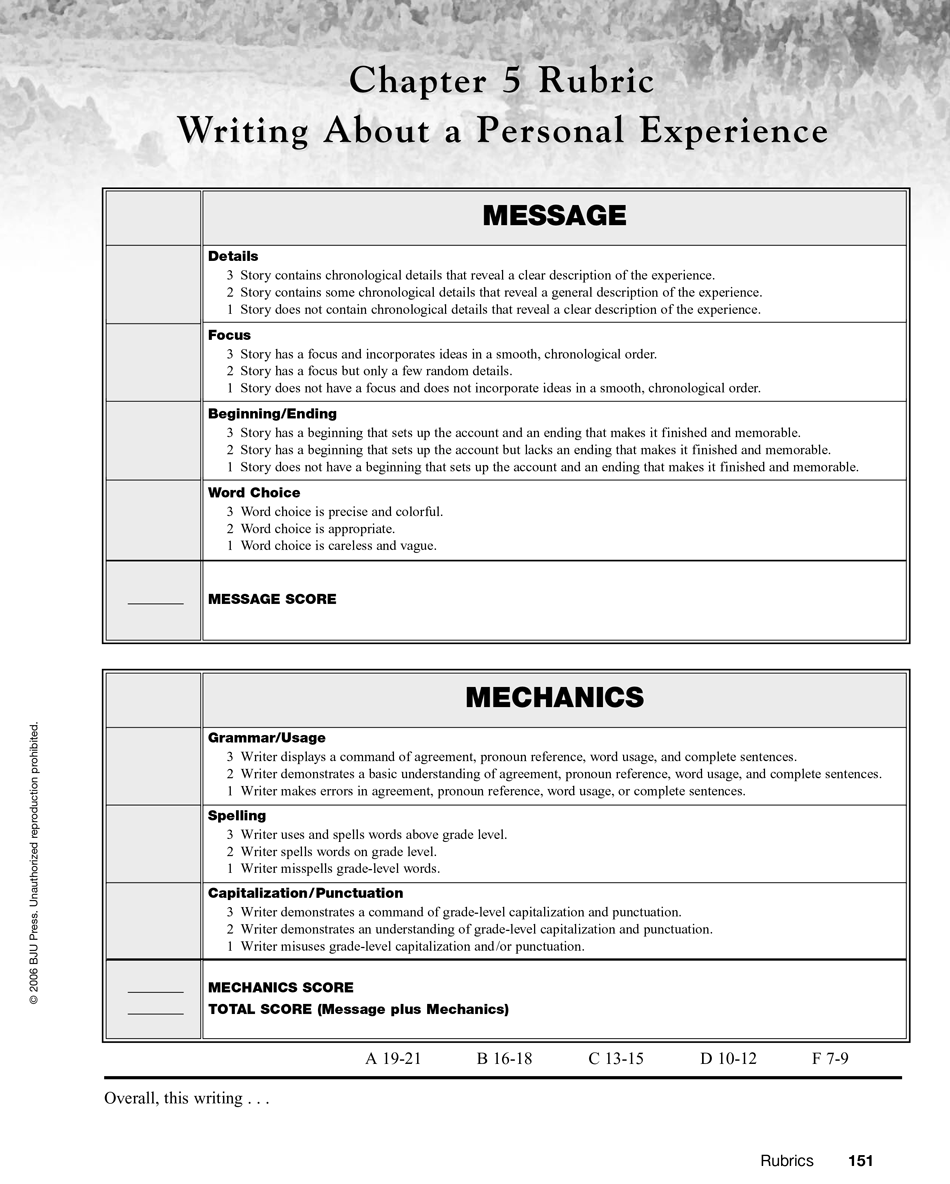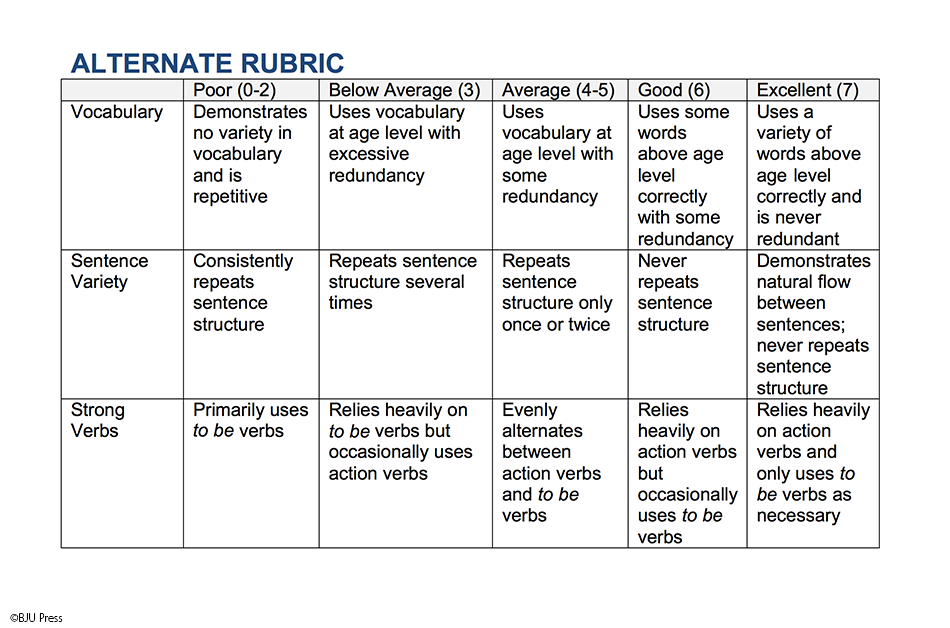
Grading a high school writing project can be more than a little confusing. Outside of simple grammar problems, there are a lot of different things to look for in an essay. A grading rubric is an invaluable assessment tool that gives you objective standards to assess your child’s writing. Teacher’s editions for BJU Press writing and grammar textbooks do provide general rubrics for all high school writing projects, but you may have other more specific goals for your student’s writing, such as
- strong verb usage,
- greater sentence variety,
- natural sentence flow, and
- avoiding passive voice.
Your child might benefit from a rubric specifically designed for him that focuses on what he struggles with in his writing. Being able to create your own grading rubric gives you control over what is emphasized in each assignment.
For example, your ninth-grade student has difficulty with sentence variety even though he has a good vocabulary. You’d like him to use his personal experience essay in Writing & Grammar 9 to practice before he writes his research essay, but the suggested rubric is designed to evenly assess a variety of different concepts, including sentence variety. You would like to change the rubric so that sentence variety is worth more points. Though you could switch out a few categories, you’d prefer to use this assignment to emphasize only a few ideas.

How do you create your own rubric so that you can focus specifically on the few ideas your child struggles with?
Creating a Grading Rubric
Rubrics follow one simple rule: the more general the rubric, the more subjective the grading will be. But the opposite is also true: the more specific and detailed your rubric, the more objective and straightforward the grading will be.
While it may seem easier (and faster) to make a grading rubric with three categories worth seven points each for a twenty-one point assignment, you might get stuck if you try to grade with that rubric alone.
You can get a little bit further by separating the number of points and assigning them to a rating. An excellent paper might get seven points, while an average paper might get four or five.
Download these grading rubric templates for ideas on how you might make your rubric more specific and detailed.
But how can you decide what makes an excellent paper excellent? Adding descriptions to the values of each category that separate good from excellent turns subjective grading into objective grading. Additionally, the descriptions will give you something to point to if your child questions his grade, and they give your child something to aim for as he’s writing. If he keeps in mind what you’ve described as excellent as he’s completing the project, he’s more likely to achieve it.
So for your ninth-grade student, you could lay out your rubric like this:

This sample rubric is a customized version of the same rubrics you’ll find in all Writing & Grammar courses. See more ninth-grade writing assignments and their rubrics in the Writing & Grammar 9 Teacher’s Edition.
Leave a Reply